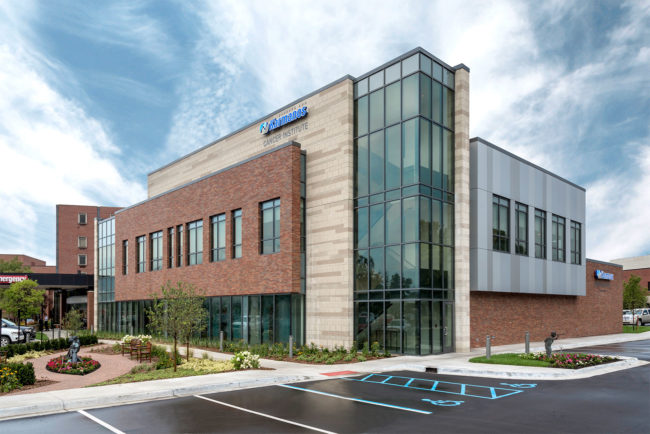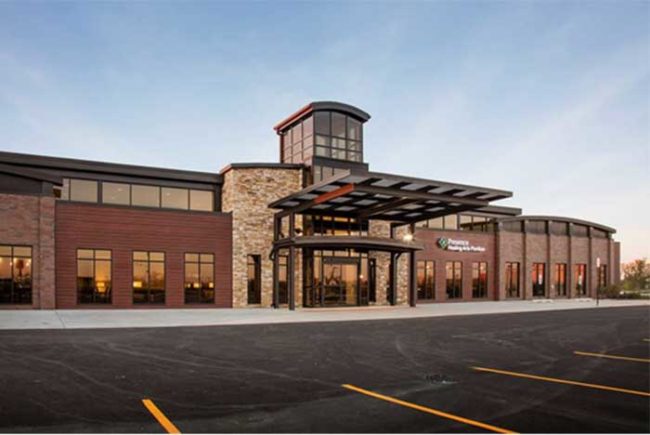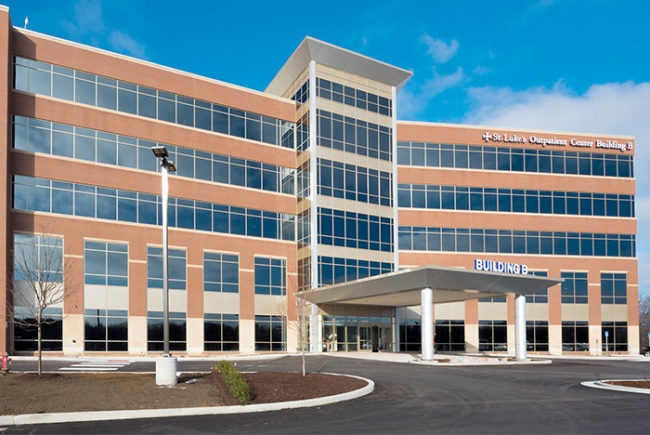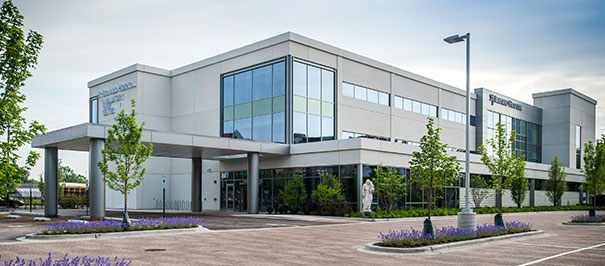
The new facility will offer myriad specialty clinics, including cardiology, rheumatology and prenatal care.
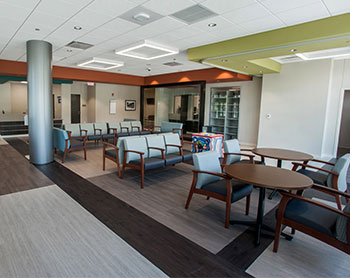
The new center provides better access to care for Chicago's South Side residents.
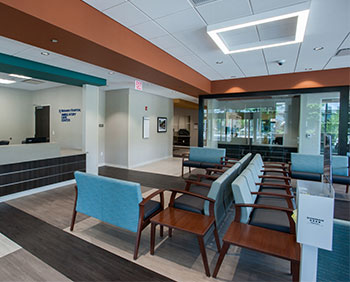
Connected to St. Bernard Hospital, leaders at the center say they wanted to provide a patient-friendly atmosphere.
Now that the ribbon cutting and other celebrations are over, the new St. Bernard Hospital Ambulatory Care Center will get down to the business of caring for a previously underserved South Side Chicago community when it opens tomorrow.
The $33 million, three-story health care center will serve as a one-stop facility designed to meet the growing demand for comprehensive, easily accessible outpatient services and specialty care.
The 70,000-square-foot, state-of-the-art health center provides an expansive and modern space with physician offices as well as clinics, including a primary care walk-in clinic, full-service diagnostic imaging, orthopedics, physical medicine and rehabilitation, an on-site laboratory and a pharmacy.
Specialty clinics include adult and pediatric asthma, cardiology, chronic diseases, diabetes, gastroenterology, otolaryngology, pulmonology and rheumatology. The women’s wellness clinic offers prenatal care, mammography screening, gynecology services, physical exams and free pregnancy tests.
The new facility also has a conference center to provide health education and wellness programs and a conference room that is available to the community for meetings and special programs.
The new center was conceived after the hospital conducted extensive community outreach to learn more about their residents and what they wanted and needed in terms of health and wellness care.
They determined that residents were either traveling outside of the community to see a physician or, worse yet, didn’t seek care at all. No local resources existed to address their nonemergency needs.
“The hospital’s Community Health Needs Assessment, which was completed in 2012, clearly identified the health care needs of our residents, and revealed a chronic lack of medical services, particularly for low-income families,” says Charles Holland, president and CEO, St. Bernard’s.
“The need for additional resources in our community had been recognized for some time, and space in the main building of St. Bernard Hospital was at capacity,” he adds.
“The opening of our ambulatory care center is an exceptional opportunity for us to better serve our community and to expand access to wellness and preventive medicine for thousands of people,” he says.
The vision was to create a one-stop health care facility with a patient-friendly environment. Patients also were flooding the emergency department (ED) in droves — which was essentially doubling as a primary care facility. The result was upset patients and an overworked ED, says Holland.
Mothers had no prenatal care and many high-risk babies were being born. Such chronic disease issues s asthma, diabetes and congestive heart failure also were prevalent — issues that require ongoing monitoring, says Holland.
With all that in mind, the planning began. A women’s wellness center expands the hospital’s capacity from three rooms to 10. OB-GYN services will take care of patients of all ages, and there’s even a dietitian to educate new mothers.
“With the opening of our Ambulatory Care Center, people are now able to access health care and specialty services close to their homes,” Holland explains. “The Englewood community deserves the same kind of services and health care that they can get in other communities, and we wanted to make sure that we provided it for them right here.”
St. Bernard’s, which has served the community as a safety net hospital for 112 years, serves more than 80,000 patients each year. Holland says the ambulatory care center demonstrates the hospital’s ongoing mission to serve the community through clinical care and education.
Among those educational resources is a library that houses a wall of computers for residents to look up health-related needs. An occupational therapy room five times larger than the current area is equipped with a stage bedroom and bathroom to teach patients how to transition from the hospital to their own homes.
In other health care facility news:
-
Demolition and site work has started on the $250 million M.T. Mustian Center at Tallahassee (Fla.) Memorial HealthCare, a project that includes construction of a five-story, 340,000-square-foot surgical tower on Tallahassee Memorial’s existing campus.
The expansion includes the build-out of 28 operating rooms, 12 shelled operating rooms, four interventional suites for neurosurgical and vascular procedures, 60 intensive care unit (ICU) rooms and 12 shelled ICU rooms.
The new facility will replace all existing operating rooms and will house related support spaces, including post-anesthesia care unit, respiratory therapy, computerized tomography imaging, perioperative services, sterile processing services, blood bank and pharmacy.
Construction company Brasfield & Gorrie, Birmingham, Ala., and design firm Gresham Smith and Partners, Nashville, Tenn., are leading the project.
-
Health care system Roper St. Francis, Charleston, S.C., plans to begin collaborating with design firm HDR Inc., Omaha, Neb., on a new $113 million medical campus in Berkeley County, S.C.
The design process should take about a year, followed by a 24-month construction phase. The 50-bed Roper St. Francis Berkeley Hospital, which is expected to open by 2019, will anchor a health village.
In addition to the 140,000-square-foot hospital, the 90-acre campus will feature multiple medical buildings offering a range of outpatient services.
Want to see your new health care construction project featured on HFM Daily? Email project information and photos to Senior Editor Jeff Ferenc or tweet to him @JeffFerenc.



